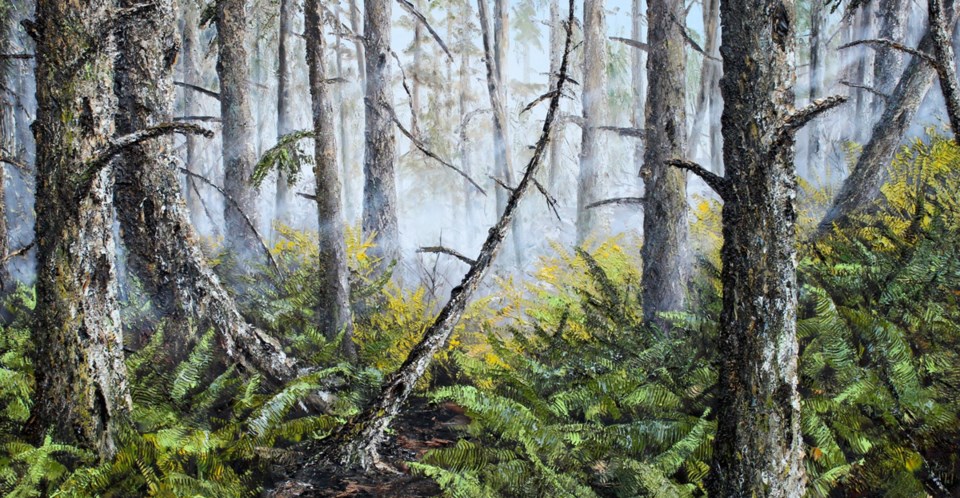In a long-ago Peanuts comic, Charlie Brown asks Linus “What is art?” The next panel shows Snoopy’s garishly redecorated doghouse, with its grinning owner dressed like a used-car salesman, standing proudly beside it. Both human characters just sigh.
I was reminded of this as I took part in this year’s Art Crawl and noticed as many looks of bewilderment as those of joyous rapture – and heard a fair number of sighs. More, though, I was reminded of art’s power to inspire joy and transport me.
It may well be better, for our purposes, to ask not what art “is” but what art “does.” What happens inside of us when we create or apprehend art? What are the emotional results of those engagements? What does art do to us that makes it so compelling?
Clearly, I am not the only one thinking about this. Recently, the Montreal Museum of Fine Arts teamed up with an association of physicians to treat patients with painting, sculpture and relaxation. In the pilot phase of this project, member physicians will be able to write up to 50 prescriptions for admission to the Museum.
This enlightened medical approach is casting a wide clinical net. Included are patients living with mental illness, emotional distresses like PTSD, and eating disorders, as well as those with high blood pressure and in palliative care.
It is worth noting that there are no known side effects or contraindications with this treatment.
Now, the big question is why. What evidence shows that exposure to art – the doing of it or simply experiencing it – has a therapeutic effect? I will here focus chiefly on the emotional side of things.
At the very least, getting out to experience art – or nature, for that matter – gives us a physical and emotional break from routine. So much of our thinking involves the mundane, the repetitive things we must do to navigate the day. The mere act of stepping into an unfamiliar environment and experiencing an artistic vocabulary takes us away from daily tedium and discomfort.
Related is the sense of hope that art can give us that the imagined world may somehow be made real and that through creativity a new reality can be made. Anyone who has experienced emotional or physical pain knows that the first casualty is the hope that things will someday be better.
And related to this is the sense, at least in much of Western society, that art is something we do after the chores are done. There is a certain giddiness that comes with the experience of art. It is a sense that we have finished with the labours of mere physical survival and have entered a plane of higher meaning: a place, however fleeting, where we are free to frolic, where we are out the back door of the mundane and onto the playing fields of the soul.
Returning to Charlie Brown, I think Charles M. Schultz was making a very deliberate point. Snoopy is joyously, unashamedly expressive. He lacks the ego that confines his human companions and his life is one long artistic gesture. None of us can be like Snoopy, but we can give ourselves permission to visit his world any time.


